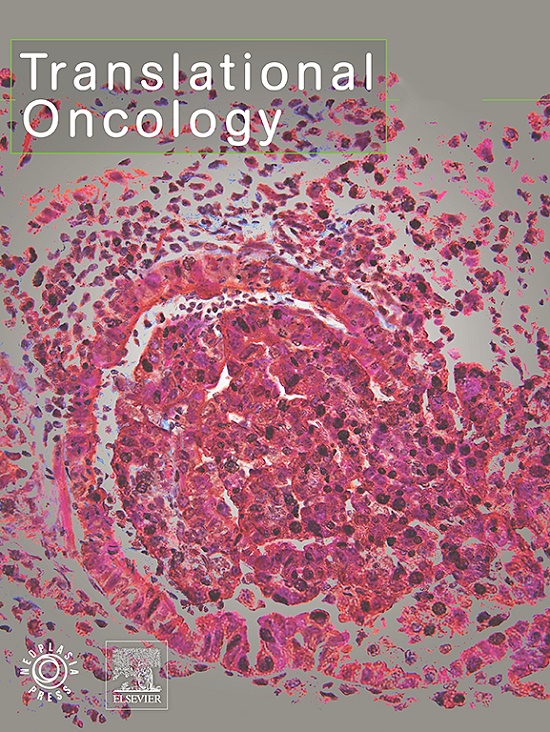Germline mutation analysis and postoperative recurrence risk prediction in breast cancer patients from western China
IF 5
2区 医学
Q2 Medicine
引用次数: 0
Abstract
Background
Much of our understanding of the germline mutation spectrum derives from hereditary breast cancer data in white populations. Additionally, the influence of genetic variants on breast cancer prognosis remains a topic of debate. Identifying patients at high risk of postoperative recurrence is crucial for guiding clinical decision-making; however, there is currently no reliable multigene risk prediction model tailored to the Chinese population.
Methods
A single-center retrospective study involving 1067 breast cancer patients was conducted. Survival analyses were performed using the Kaplan‒Meier method and Cox proportional hazards regression. Postoperative recurrence risk prediction models were developed utilizing the Cox regression methodology.
Results
In this cohort, 229 germline pathogenic/likely pathogenic (P/LP) mutations were identified in 215 patients (20.1 %). No significant differences in disease-free survival (DFS) were observed between germline P/LP mutation carriers and non-carriers. However, 10 single-nucleotide polymorphisms (SNPs) were significantly associated with DFS outcomes. By integrating the SNP status and clinical phenotype, a postoperative recurrence risk prediction model was established. The area under the curve values for 1- and 3-year DFS in the training set were 0.840 and 0.754. This model can accurately predict the DFS of patients in both the training set (hazard ratio [HR] 5.23, 95 % confidence interval [CI] 2.96–9.34; p < 0.0001) and the validation set (HR 2.88, 95 % CI 1.41–6.06; p = 0.003)
Conclusion
In patients with early and locally advanced breast cancer, SNPs, rather than germline P/LP mutations, impact DFS. Using a genetic-clinical model, we successfully identified patients at high risk of postoperative recurrence.
中国西部地区乳腺癌患者生殖系突变分析及术后复发风险预测
背景:我们对种系突变谱的理解大部分来自白人群体的遗传性乳腺癌数据。此外,遗传变异对乳腺癌预后的影响仍然是一个有争议的话题。识别术后复发高危患者对指导临床决策至关重要;然而,目前还没有针对中国人群的可靠的多基因风险预测模型。方法对1067例乳腺癌患者进行单中心回顾性研究。生存率分析采用Kaplan-Meier法和Cox比例风险回归。采用Cox回归方法建立术后复发风险预测模型。结果在该队列中,215例患者(20.1%)检测到229例种系致病性/可能致病性(P/LP)突变。生殖系P/LP突变携带者和非携带者的无病生存期(DFS)无显著差异。然而,10个单核苷酸多态性(snp)与DFS结果显著相关。通过整合SNP状态与临床表型,建立术后复发风险预测模型。训练集中1年和3年DFS曲线下面积分别为0.840和0.754。该模型能准确预测训练集患者的DFS(风险比[HR] 5.23, 95%置信区间[CI] 2.96-9.34;p & lt;0.0001)和验证集(HR 2.88, 95% CI 1.41-6.06;结论在早期和局部晚期乳腺癌患者中,影响DFS的是snp,而非种系p /LP突变。使用遗传-临床模型,我们成功地确定了术后复发高风险的患者。
本文章由计算机程序翻译,如有差异,请以英文原文为准。
求助全文
约1分钟内获得全文
求助全文
来源期刊

Translational Oncology
ONCOLOGY-
CiteScore
8.40
自引率
2.00%
发文量
314
审稿时长
54 days
期刊介绍:
Translational Oncology publishes the results of novel research investigations which bridge the laboratory and clinical settings including risk assessment, cellular and molecular characterization, prevention, detection, diagnosis and treatment of human cancers with the overall goal of improving the clinical care of oncology patients. Translational Oncology will publish laboratory studies of novel therapeutic interventions as well as clinical trials which evaluate new treatment paradigms for cancer. Peer reviewed manuscript types include Original Reports, Reviews and Editorials.
 求助内容:
求助内容: 应助结果提醒方式:
应助结果提醒方式:


